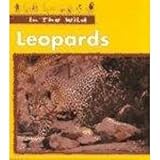Lesson 2: Characteristics of Nonfiction
Lesson Plan
In the Wild: Leopards

- Learning Goal
- Identify and describe the characteristics of a nonfiction book.
- Duration
- Approximately 50 minutes
- Necessary Materials
-
Provided: Example Chart for Direct Teaching and Guided Practice, Example Direct Teaching and Guided Practice Graphic Organizer, Independent Practice Worksheet
Not Provided: In the Wild: Leopards by Stephanie St. Pierre, nonfiction books from classroom library and on students’ reading levels
-
Teacher Modeling

will review the Venn diagram from Lesson 1 comparing fiction and nonfiction books. I will explain that there are some common characteristics of nonfiction books. I will use the book In the Wild: Leopards by Stephanie St. Pierre to identify, discuss, and chart some of the common characteristics of nonfiction books. (Direct Teaching and Guided Practice Example Graphic Organizer and Example Chart are provided in Teacher and Student Materials below.)
-
Think Check
Ask: How did identify typical characteristics of a nonfiction book? Students should respond that you looked at different parts of the book in the beginning, middle, and end and thought about how those parts of the book help the reader.
-
Guided Practice

will look through other nonfiction books (provided by the teacher) to identify these characteristics and others to add to the chart. We will discuss how each characteristic helps us as readers. For example, the Table of Contents helps us find where to look in the text for specific information.
-
Independent Practice

will read a nonfiction book at your level and identify at least 2 nonfiction characteristics in your book. You will explain how identifying that characteristic helps you as a reader. (Student Independent Practice is provided below.)
Texts & Materials
Standards Alignment
(To see all of the ReadWorks lessons aligned to your standards, click here.)




Does anyone have a suggested replacment book? This one is $2000 on AMAZON.
Did you ever find where to purchase this book?